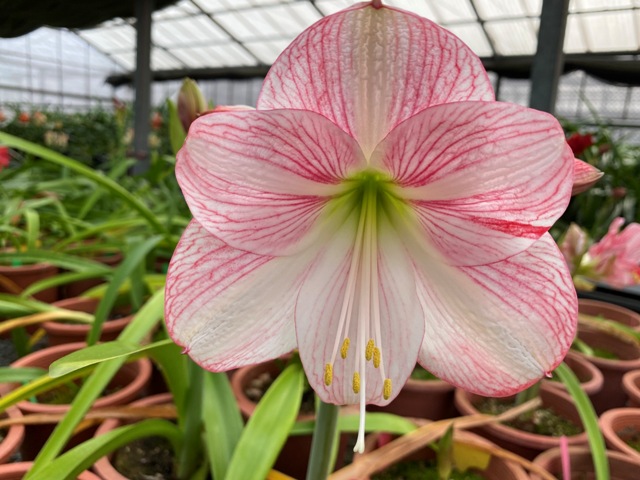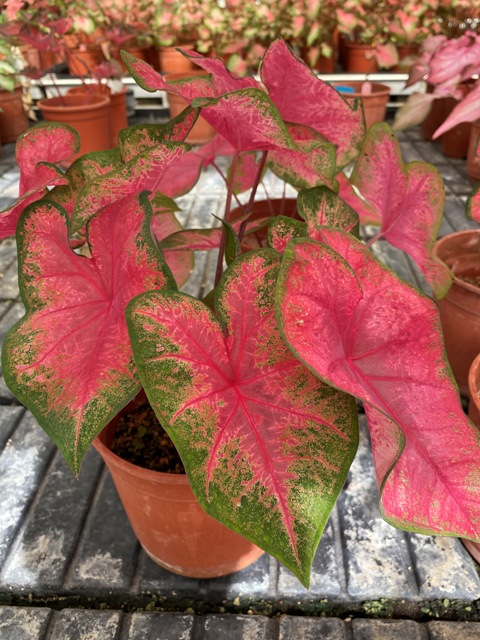- Research on Seedling Propagation Technology of Eastern Aboriginal Tribes
- Counseling on Digital Transformation of Small,Medium and Micro-sized Crops and Seedlings with Potential for Export
- Recycling of surplus materials from tomato and pumpkin productio
- Research on the improvement of a renewable energy supply chain model for the residual media of mushroom
- Adaptation and mitigation the impact of important weeds on staple crops (cucumber) under climate change
- Constructing intelligent identification services for seed and seedling industry
- Application and Promotion of Production and Sales Management Wisdom Network for Vegetable Nursery
- Function Demonstration and Optimization of the Expert System for Vegetable Seedling Production Forecast
- The establishment of smart production and application model of plant tissue culture
- Research of optimization for detecting operation procedure on seed-borne pathogens and development of seed disinfection technique
- Research and consulting on the response of seed industry under high temperature and drought stress.
- Establishment of the heat-resistant selection index and breeding of tomato
- High quality tomato and stress tolerance breeding technology in Facility.
- Evaluation and Application of Drought-tolerant Potato Germplasm Resources
- Establishment of the biological indicator of disease resistance for tomato in drought condition
- Establishment of marker assisted selection applied to the selection of drought-tolerant maize and heattolerant tomato
- Establishment of precise and efficient breeding technology for industry-oriented traits of cauliflower
- Molecular Marker-Assisted Tomato Disease Resistance Breeding Selection Model Construction and Technology Development
- Participatory Selection of Healthy Ginger Seedlings and Establishment of Production System
- Participatory selection of taro regional clonal lines
- Analysis and application of root‐associated microbes from soil-borne disease resistant and sensitive lines of Solanaceae crops
- Improvement on the Micropropagation Technique - In vitro propagation of avocado (Persea americana Mill.) through apical buds and nodal segments
- Developing of crops novel assisted breeding technology on melon
- Research on germplasm maintenance and industrial application of vegetative propagation crops
- Germplasm development and application of Aeridinae subtribe orchids and Cattleya genus.
- The Establishment of Organic Seedling and Seed Saving System
- Research on Genetic Resources and Plant New Variety DUS Testing Techniques Management and Application of the Economical and Special Crops in Taiwan
- Establishment of organic seed production and supplying system for grain crops
- The seedling leaf electrolyte leakage index was used to select papaya heat-resistant Resistance and virus Resistance varieties.
- Selecting for resistance bacterial wilt and F1 Seed Collection of tomato.
- Techniques development for bulb flowers breeding
- Establish Cucurbitaceae vegetable breeding technologies of heat tolerance
- Establishing the Technology ofNew Papaya Viety Breeding for the International Market.
- Research on Agricultural Social Responsibility for the trainees of Farmers' Academy
- Establishment of Phalaenopsis Varieties Identification and Application Integration Platform
- Study of inspection and monitoring system for precisely breeding crops
- Harmonization and Cooperation on DUS testing between Taiwan and Japan
- Taiwan-Israel Plant Variety Protection Cooperation and Study on DUS Testing
 Home > Achievement > 2022 Research Project List > Techniques development for bulb flowers breeding Home > Achievement > 2022 Research Project List > Techniques development for bulb flowers breeding |
Techniques development for bulb flowers breeding
The project of breeding goals in 2022 for amaryllis, calla lily and caladium have completed including 50 amaryllis hybrid combinations, 35 calla lily cross combinations, and 45 caladium hybrid combinations . A total of 130 combinations have been crossed and sowing and embryo culture work. In addition, the cultivation of flowering bulbs planted in the field and the soilless medium in the greenhouse were also carried out. A total of 410 individual plants of calla lily hybrid combination, 850 amaryllis and 300 caladium were planted, for a total of 1560 plants. This project uses diploid amaryllis varieties with fragrance and tetraploid varieties to cross, and a triploid A-3 single plant with potential has been screened out. The potential progeny will be mass propagation and evaluate. Using the cell membrane thermostability(CMT) detection technology of the leaf cell membrane is to screen out the heat-resistant parents for hybrid breeding of calla lily, and screen the hybrid progenies. As a result, the progeny with heat-resistant potential are screened as 94013-1, 94011-1, 94012-1, 94065, and 94014. They will be planted in summer to evaluate the flowering situation in the future. In addition, the excellent horticultural characteristics of the hybrid progenies were screened by flower shape, flower color, flower stem length, etc., and progenies were screened as 94029, 94046, 94052 and 94068. For the screening of new strains of caladium, 300 individual plants of the hybrid progenies were planted in the plastic net greenhouse for tuber cultivation and observation of plant growth characteristics. From the evaluation of leaf shape, color, and leaf yellowing and withering time, three potential progenies which are CHB920443-09, CHB920464-18 and CHB950033-11 have been screened.
 ▲Fig.1 A potential progeny A-3 of amaryllis |
 ▲Fig.2 A potential progeny of caladium |
